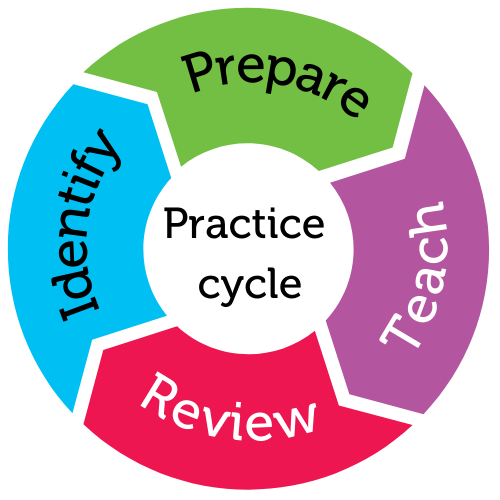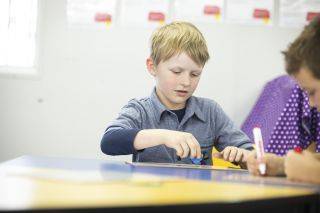
For student year
Helps students to
- identify and respond to emotions
- regulate emotions
Helps teachers to
- support emotional development
- respond to emotions
Summary
You play a key role in helping your students to develop emotional literacy, which is the ability to identify, understand and respond to one’s emotions. Some students, including those on the autism spectrum, often struggle to recognise and understand their own emotions and the emotions of others. This can lead to larger behaviour concerns within your classroom. By supporting your whole class in developing emotional literacy, you can allow discussion about emotions and establish a deeper understanding. Emotional literacy is essential for all children to understand that the emotion they feel is neither good or bad, and to understand how to process emotions in a healthy way. This creates empathy and kindness within your classroom.
How the practice works
Watch this video to learn more about this practice.
Duration: 4:00
Australian Professional Standards for Teachers related to this practice
1.6 - strategies to support the full participation of students with disability
4.1 - support student participation
For further information, see Australian Professional Standards for Teachers AITSL page
Preparing to teach
The ability to identify, understand, and label emotions develops over time and it is critical that adults actively foster it. Plan to foster students’:
- emotional vocabulary
- identification of the full range of emotions experienced
- communication of emotional experiences to others (parents, peers and teachers)
- recognition of situations that evoke these emotions.
By also labelling feelings in appropriate situations, you:
- expose students to a rich vocabulary for expressing feelings
- teach your students about empathy for others
- assist students to understand ways to express their emotions.
It also allows your students to understand where the emotion comes from, recognise it, and learn how to self-regulate before a strong reaction occurs.
It works better if:
- you consider student communication skills; emotions are abstract concepts so use visual supports (graphics or video) where possible
- you start by teaching universal primary emotions (e.g., happy, sad, angry) to establish a base understanding before continuing to secondary emotions (e.g., jealous, embarrassed)
- you use different strategies to teach about emotion (e.g., visual, oral, movement)
- strategies for managing challenging feelings are taught while the student is calm.
It doesn’t work if:
- strategies are taught during times of distress; we all have trouble learning when we are very stressed or upset
- your student has interoception needs and may struggle to recognise body clues when they are feeling emotion
- your explanation of the feeling and associated events is too complicated or the student is not able to understand the emotion being taught.
In the classroom
How do I do it?
Throughout the school day
- Model responding to, and regulating emotions (e.g., taking deep breaths when frustrated)
- Label emotions in context, use nonverbals to show the emotion and describe how students can express their feelings
- Encourage students to label their own emotions
- Sing songs, read stories, and role-play in relation to a variety of feeling words. You can find some of these online.
An example
A student who always plays with a certain toy cannot find it. You can intervene by frowning and saying, “You look frustrated by not being able to find your toy. I would feel frustrated too if I cant find something I am looking for.” This labels the emotion and models using the word 'frustrated' for the feeling the student is experiencing, as well as showing the student that what they are feeling is normal in the situation they are in. You can then model some positive coping strategies for the student such as looking for another toy or asking a friend if they have seen the toy.
Practice toolkit
Practice implementation planner template
We know it's not always easy to keep track of what's working and what isn't. So, we've created this template for you to record and reflect on what you're doing to create more inclusive classrooms. The implementation planner contains:
- guidance around goal setting
- a reflection section (what worked, didn’t work, what to change, and next steps)
- prompting questions.
Implementation planner with examples
Set your professional learning goal for:
Model emotional literacy
Benefits of goal setting
Setting, working towards, and reflecting on goals helps you grow professionally and improve your practice. You can access AITSL learning resources for teachers to learn more about:How to set goals
The Australian Institute for Teaching and School Leadership recommends using the SMART matrix to frame your goal setting.SMART goals refers to goals that are:
- Specific
- Measurable
- Achievable
- Relevant
- Time-phased
Resources
Model emotional literacy - Practice Brief
Related Practices

Model positive interactions
TEACHING PRACTICE
For student years
Helps students to
- build social-awareness
- interact with others
This practice is from the core research project
Learning Cycle

